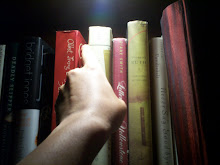
I feel bad for hating on this novel, since it is technically the sort of book I should like. It's about Italy, it contains stellar recipes, it's got a neat front cover (sold!). But, if I had a five-star rating scale, this book would get a whopping two. I found La Cucina by Lily Prior lacking significantly in the uniqueness and stylistic grace that makes other books of its kind so much fun to read.
This book is the sexed-up, slightly demented lovechild of Under The Tuscan Sun and Like Water for Chocolate (both are excellent books, so it's a pity that they have such an odd pseudo-offspring). While the other two books handle the topics of family, hardship, and love in a classy and novel manner, La Cucina feels like it's been done before and, moreover, is just plain awkward to read. Within the first couple of pages, the narrator is talking about lying naked on a table and going into discourse on the subject of the virility of the locals' loins.
DO NOT WANT.
Don't get me wrong--I'm not a prude by any standards and, to be fair, the back cover of the book did prepare me adequately for the general content. Food and sex are deeply intertwined in this book; the two are explored together in all varieties of visual media (see photography byGeorgia O'Keefe, or the Japanese film "Tampopo"), so it isn't at all an unnatural pairing. What weirded me out was the style, the manner in which these themes were discussed. There is a lot of what I have termed "sexytime" in this book (I'm sure you can figure out what that means). I generally have no problem with literary sexytime. The problem with this novel is that the sexytime isn't...sexy. Or sensual. It's the kind of sexytime that makes your (or, at least, my) skin crawl.
But, hey, maybe the problem is with me. As a member of the younger generation, I don't have any relish for expostulation upon the mating rituals of the elderly (which, of course, is the nature of sexytime in La Cucina). Perhaps I just have some growing up to do before this will be a relevant/appealing read for me. In that case, I suppose your enjoyment depends on who you are and where you are in life. I'm just not there yet. Despite the richness and flavor of certain sections of the novel, I couldn't ignore the painful awkwardness long enough to properly enjoy what I was reading.
Anyway, on to the plot!
La Cucina follows and is narrated by Rosa Fiore, a farmer's daughter from the Italian countryside. Rosa is a talented and passionate cook, and her knack for the culinary arts introduces and sustains food throughout the novel as a medium for her self-expression and emotional catharsis (hence the similarity to Like Water For Chocolate). As a teenager, she falls in love with Bartolemeo, the son of a Mafioso who has already been promised to another by his father. Though Bartolomeo loves Rosa in kind, their romance comes to a tragic end, which results in a grief-stricken Rosa exiling herself first to her kitchen and later to the city of Palermo where she lives and works as a librarian. It is only years later in her life, after she has resigned herself to a loveless existence and grown fat on the richness of her cooking, that she meets an Englishman (who is referred to only as "L'inglese"--literally "the Englishman"--throughout the novel) who makes her discover not only the full extent of the pleasures of food, but also the pleasures of the body.
But, of course, love can't last. More disaster strikes and, in the wake of yet another loss, Rosa returns to her hometown where family drama (including a who's-the-daddy twist) awaits her. Despite this, though, the novel ends on an optimistic note, leaving Rosa's future happiness up for the reader to imagine.
The awkward handling of sex as a theme in La Cucina wasn't exactly my only problem with the novel. The characters feel more like caricatures, lacking depth and originality. Though the story was decent, the narrative was sadly lacking. I generally wouldn't recommend it, but if you're determined to read it, be aware that there is a good deal of strong language used, as well as a few relatively explicit sex scenes.
The tagline of the title is "A Novel of Rapture". Sorry, Lily Prior. I really wasn't feeling it with this one.


